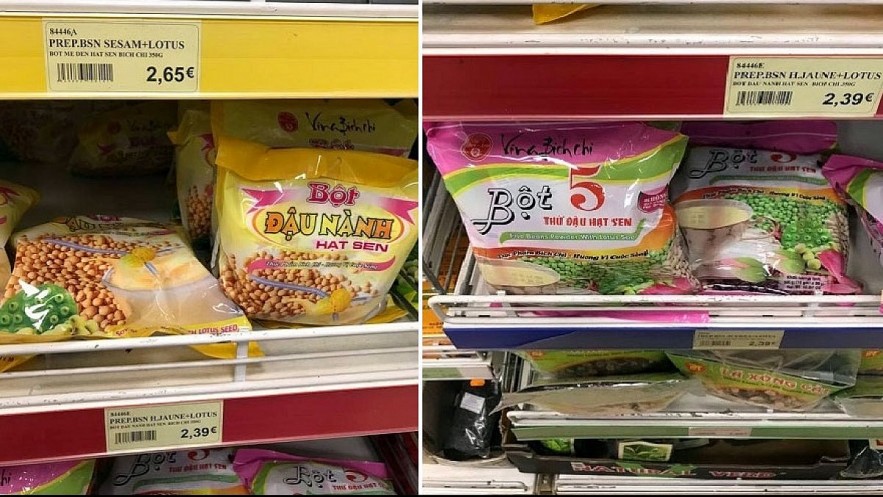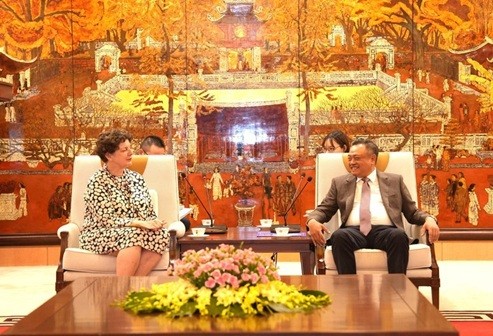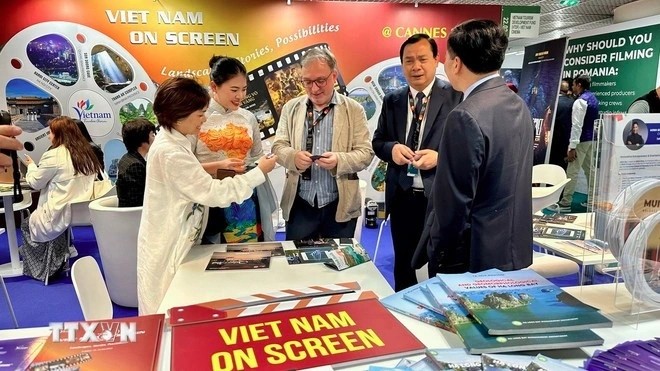EVFTA Paves Way to Boost Vietnam-Germany Trade
 |
| Vietnamese products appear in many supermarkets in Europe and Germany. Photo: VOV |
Over the years, Germany has always been one of Vietnam's most important trading partners. In export, Germany is Vietnam's second largest export market in the EU and 7th in the world in 2020. Germany is the second largest source of goods for Vietnam in the EU and 14th in the world in terms of imports.
2021 is the first year of implementation of the EU-Vietnam Free Trade Agreement (EVFTA), an agreement that helps raise the level of trade relations between Vietnam and the EU in general and with Germany in particular. According to Hoang Quang Phong, vice president of the Vietnam Chamber of Commerce and Industry (VCCI), Vietnam hopes for the EVFTA to help businesses of both countries quickly get out of difficulties, restore production, and develop business activities in the new normal period.
Phong also said that bilateral trade between Vietnam and Germany is compared by many experts "like a tank rolling slowly but steadily," increasing the turnover value by 80% in 10 years, from US$5.6 billion in 2011 to US$10 billion in 2020. Agricultural, aquatic products and other products of Vietnam have been on the shelves in German supermarkets. German consumers are also familiar with clothes, shoes, furniture and other products "Made in Vietnam."
Meanwhile, many Vietnamese families have started to use good quality and reputable drinks, electronics and products from Germany. Many Vietnamese enterprises have had the opportunity to access high-tech machinery and equipment imported from Germany, thereby significantly improving their productivity and product quality, enhancing their competitiveness.
"The growing trade relationship between Vietnam and Germany has helped the two countries' businesses and consumers have more choices and opportunities to develop in the near future," Phong said.
According to the Import-Export Department, Ministry of Industry and Trade, the EVFTA coming into force is an important foundation for the Vietnam-Germany trade relationship to be accelerated more strongly, thereby bringing more benefits to the both sides. This agreement stipulates that Vietnamese goods exported to Germany will be exempted from tariffs up to 99.2% of tariff lines after 7 years. As for German goods imported into Vietnam, the tariff elimination rate will reach 98.3% after 10 years.
In addition, the EVFTA also establishes standards and principles for trade facilitation, minimizing non-tariff barriers, and opening up great opportunities for trade between Vietnam and Germany. Therefore, to make the best use of these opportunities, Vietnamese enterprises need to fully understand the commitments of Vietnam and Germany in the EVFTA. Import and export enterprises need a thorough understanding of the market, the import and export regulations of both countries.
 |
| Enterprises exporting to the German market need to spend time to learn and study about the regulations on the origin of goods. Photo: Congthuong.vn |
Nguyen Cam Trang, deputy head of the Department of Import-Export, Ministry of Industry and Trade, said that Germany is a market with great import demand. Exports from Vietnam to Germany are only at US$11.7 billion, accounting for only 1% of the import market share of the German market. Therefore, there is still a lot of room for businesses to exploit the German market.
Trang said that there are products that are considered as strengths of Vietnam, but the export turnover to the German market is very low such as textiles. The reason is that this product still has difficulty meeting the criteria of rules of origin. For wooden handicraft products, flexible rules of origin have been applied in the EVFTA.
“In fact, the rules of origin are quite complicated. Enterprises need to take the time to learn and research about them, about the opportunity to cut tariffs to choose the most profitable form when exporting to the German market. This is to enjoy tax incentives to take advantage of the opportunities brought by the EVFTA," she said.
Currently, there are 10 largest import partners to Germany, including eight partners within the EU, and 2 outside partners are China and the US. However, these two big rivals do not have a free trade agreement with the EU in general and with Germany in particular, so this is also a great advantage for Vietnamese enterprises.
Nguyen Thi Thu Trang, director of the WTO Center said, businesses need to prepare to avoid being applied self-defense measures. The reason is that Germany in particular and the EU in general is a market with a very high frequency of using non-tariff measures, up to 93.88% of imported products are subject to at least one non-tariff measure.
 | Promoting German-Vietnamese Trade and Investment Through Diplomacy Deputy Minister of Foreign Affairs of Vietnam and Chief Representative of AHK Vietnam discussed cooperation plans to promote diplomatic relations, trade and investment between Germany ... |
 | Vietnam-Germany Relations Grow Stronger The Vietnam-Germany relationship goes from strength to strength |
 | Partners of Commerce and Culture: Enjoying Vietnamese Art in Germany On Oct. 10, the October Art Club celebrated its 10th anniversary. Established in Berlin, the club has been contributing to strengthening the cultural programs of ... |


